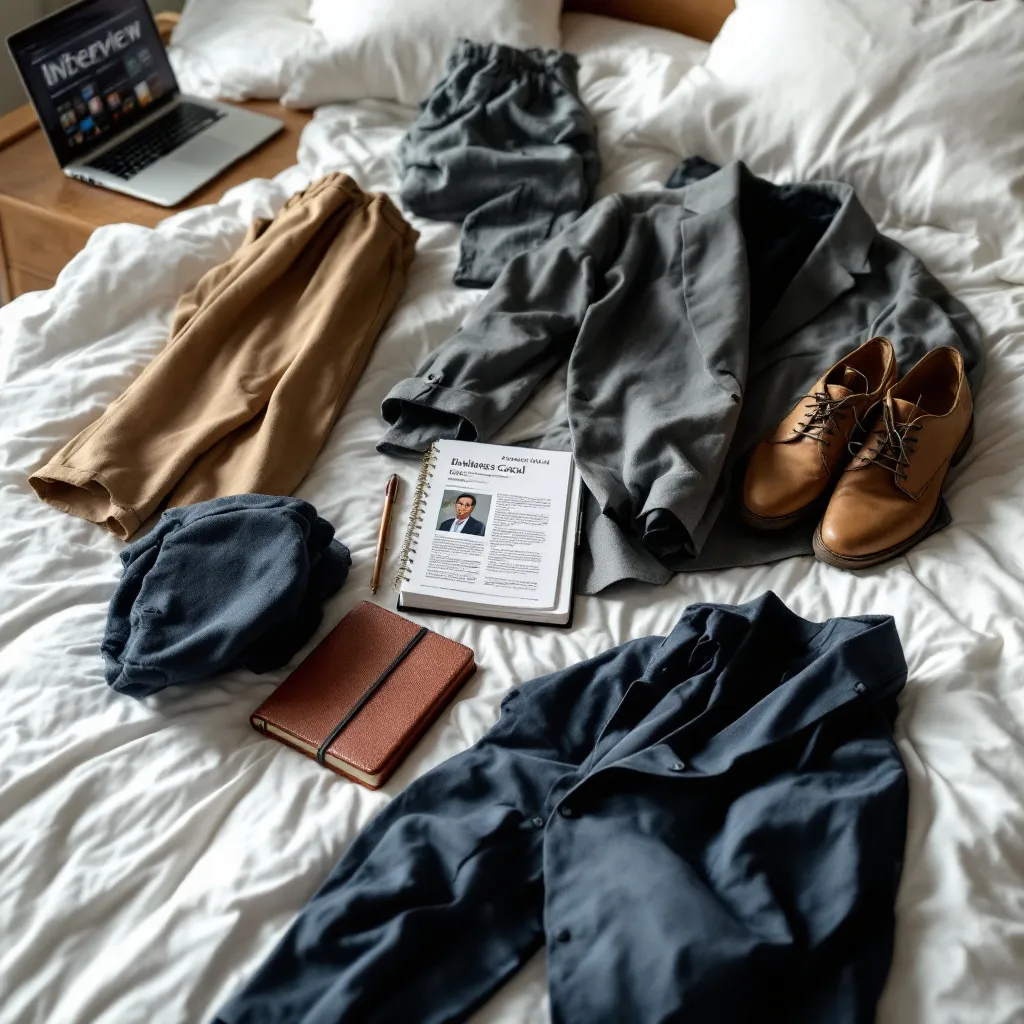Making a strong first impression is crucial in retail, an industry where visual presentation directly impacts business success. Your interview attire speaks volumes before you say a word, signaling to potential employers whether you understand their brand aesthetic and customer expectations. Let’s explore how to dress appropriately for retail interviews across different environments.
Understanding the Retail Interview Dress Code
Retail interview attire requires balancing professionalism with brand alignment. In English-speaking markets like the US and UK, business casual is widely accepted, though interpretations vary significantly between retail segments.
In US markets, the emphasis is on a “polished yet approachable” look, often combining tailored separates like blazers with dark jeans according to Indeed. UK markets tend to lean slightly more formal, with structured blazers or knee-length skirts paired with tights often preferred.
The golden rule: Research the store’s aesthetic before your interview. Visit the location, browse their website, or check their social media to understand how employees dress and how the brand presents itself visually. Your goal is to reflect the brand’s image while elevating it to interview-appropriate formality.
Core Principles for Retail Interview Attire
Regardless of the specific retail environment, certain principles apply universally:
-
Adapt to Brand Aesthetic: Study current employees’ attire and mirror it one step more polished. For casual brands like H&M, a button-down shirt with dark jeans might be perfect as Hockerty advises.
-
Prioritize Fit and Cleanliness: Wrinkled or ill-fitting clothes immediately undermine professionalism. Invest time in steam-pressing fabrics and ensuring everything sits properly on your frame.
-
Incorporate Subtle Personal Style: Small touches like muted patterns or minimalist jewelry can help you stand out while respecting the brand’s image. This demonstrates your fashion awareness – a valuable trait in retail.
-
Consider Practicality: Retail often involves movement, standing for long periods, or handling merchandise. Choose comfortable, functional pieces that won’t restrict mobility.
Outfit Recommendations by Retail Environment
Luxury and High-End Retail
For upscale retailers like Tiffany & Co. or Nordstrom, business formal or polished business casual is expected:
- Women: Tailored suit in navy or gray, pointed-toe heels (comfortable enough for standing), minimal jewelry, and a structured handbag.
- Men: Full suit with tie, polished dress shoes, subtle cufflinks, and a professional watch.
The focus here is quality over quantity. One well-tailored outfit trumps multiple trendy but lower-quality options. Resume Professional Writers notes that luxury retail candidates should aim for sophistication with attention to fine details.
Fashion and Apparel Stores
For fashion retailers like Zara, H&M, or Gap, demonstrate trend awareness while maintaining professionalism:
- Women: Dark jeans with a structured blazer, fashion-forward blouse, and stylish but comfortable flats or low heels.
- Men: Chinos or dark jeans, button-down shirt (possibly with subtle pattern), casual blazer, and clean fashion sneakers or loafers.
Consider wearing items from the store itself (without visible logos) to demonstrate genuine appreciation for their merchandise. This shows you understand their customer and can represent their brand effectively.
Department Stores and General Merchandise
For retailers like Target, Macy’s, or Marks & Spencer, business casual is the standard:
- Women: Pressed dress pants or knee-length skirt, collared shirt or blouse, cardigan or blazer, and ballet flats or low heels.
- Men: Khakis or dress pants, button-down shirt, optional tie, and clean dress shoes.
Department stores often appreciate versatile professional looks that work across various settings, as you might need to interact with diverse customer demographics.
Casual Retail and Specialty Stores
For bookstores, outdoor retailers, or casual brands like Old Navy:
- Women: Neat khakis or dark jeans (no distressing), polo shirt or neat blouse, and clean sneakers or comfortable flats.
- Men: Polo shirt or casual button-down, khakis, and clean casual shoes.
Even in casual environments, avoid appearing too relaxed. Indeed’s guidelines suggest aiming for “smart casual” rather than everyday casual.
Common Retail Interview Attire Mistakes to Avoid
-
Overly Casual Items: Avoid flip-flops, graphic tees, distressed denim, or anything with visible logos as cautioned by Indeed.
-
Competitor Branding: Never wear visible items from competing retailers – this demonstrates poor awareness.
-
Impractical Choices: Avoid uncomfortable shoes, restrictive clothing, or anything that would prevent you from demonstrating retail tasks if asked.
-
Distracting Accessories: Large logos or noisy jewelry can divert attention from your qualifications per Hockerty’s guide.
-
Can you wear jeans to an interview? While dark, non-distressed jeans might work for casual retailers, they’re rarely appropriate for luxury or department store interviews.
Final Preparation Tips
-
Pre-Interview Research: Visit the store beforehand to observe employee outfits and customer demographics as advised by Indeed.
-
Test Mobility: Ensure your outfit allows for bending, reaching, and comfortable standing – all common actions in retail positions.
-
Prepare the Night Before: Lay out your complete outfit, including accessories, to avoid morning stress and last-minute changes.
-
Grooming Essentials: Trim nails, use minimal fragrance, and opt for neat hairstyles per WorkPac.
-
Emergency Kit: Pack a small emergency kit with stain remover, lint roller, and breath mints for last-minute touchups.
Beyond just clothing, remember that confidence is your best accessory. When you feel appropriately dressed for both the position and the brand, you’ll naturally present yourself more confidently during behavioral interview questions and demonstrate your best interview skills.
The right retail interview outfit balances professionalism, brand alignment, and personal comfort. By researching the company’s aesthetic and following these guidelines, you’ll make a positive first impression that complements your qualifications and enthusiasm for the role.
Ready to ensure your entire application stands out? ResuFit can help you create tailored resumes and cover letters that complement your professional appearance, significantly increasing your chances of retail interview success.
Need more interview preparation? Explore our guides on interview questions and answers and basic interview questions and answers for freshers to complete your preparation.




















